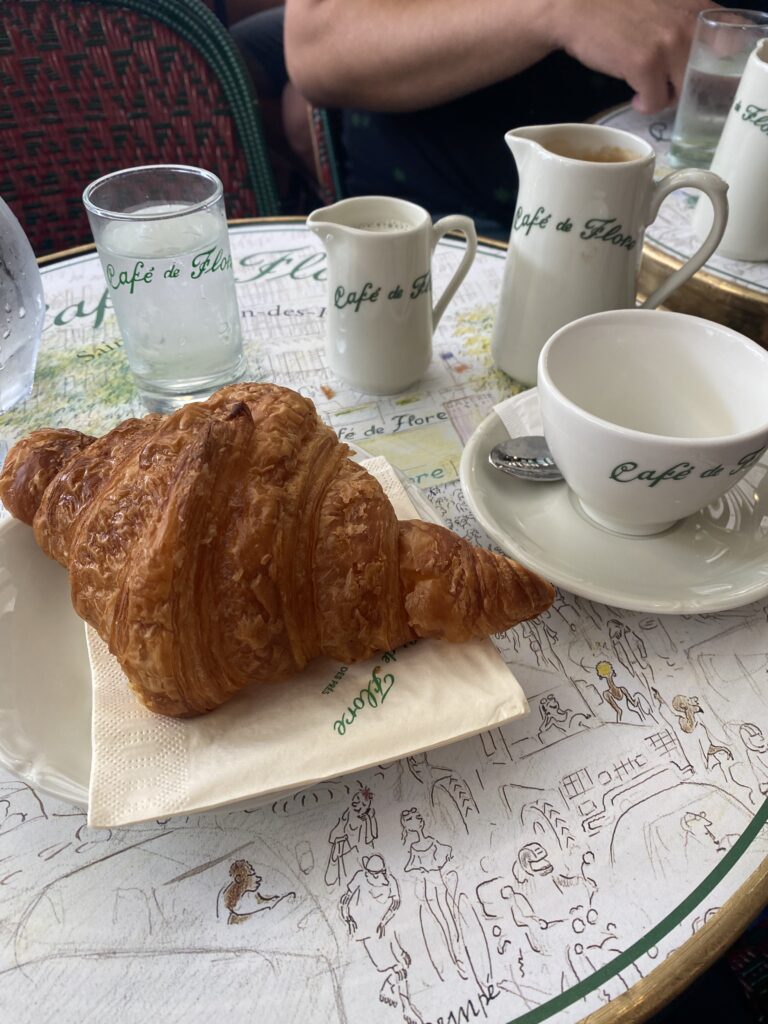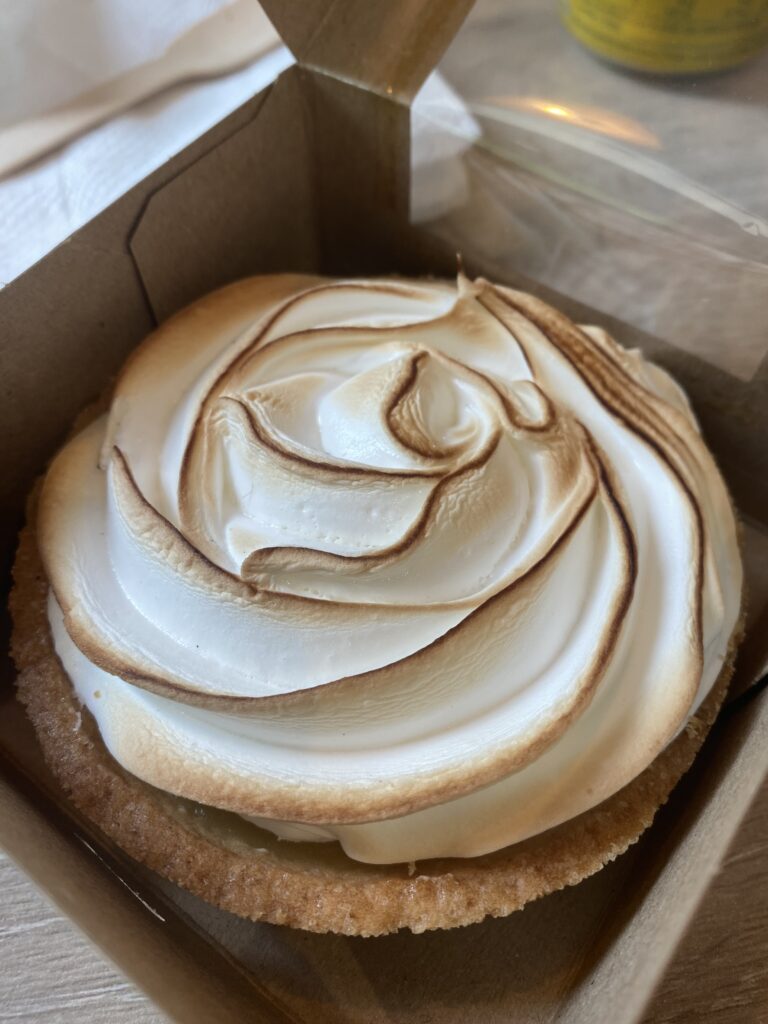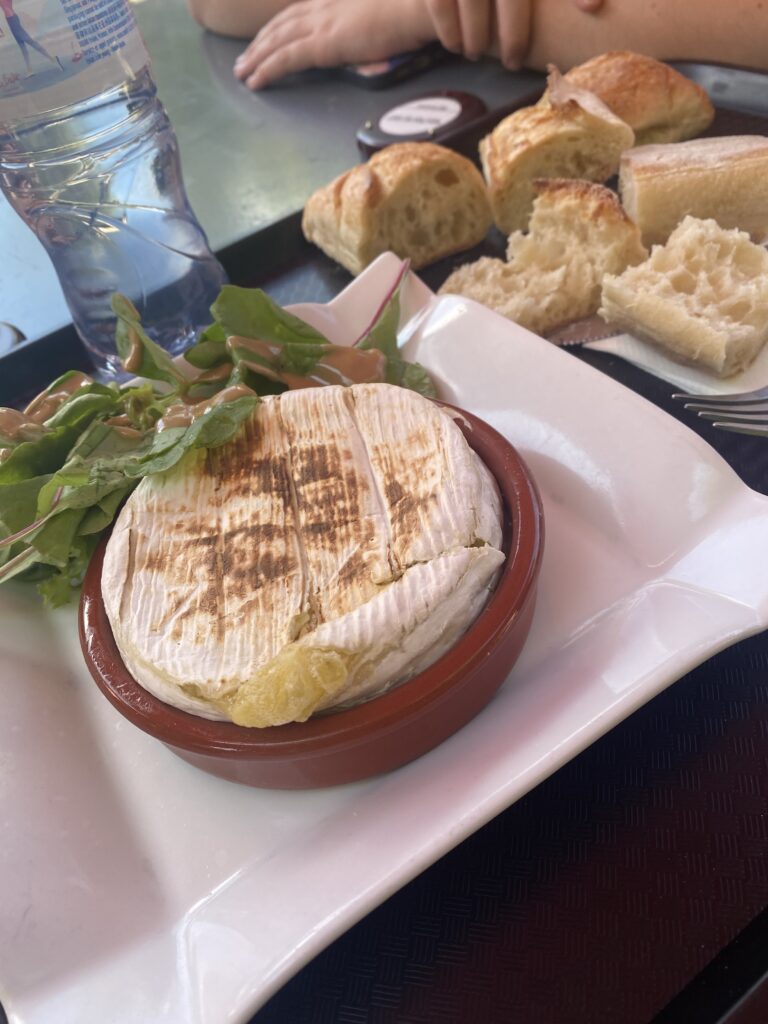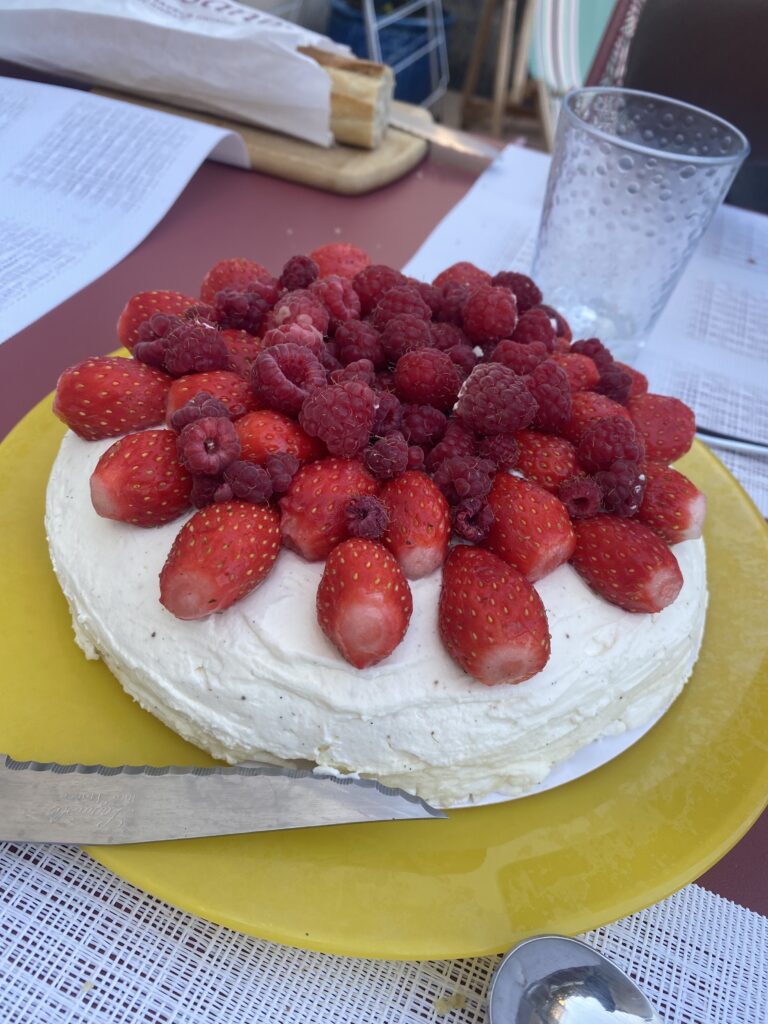While the French are famously known for their bread, many of their other food customs remain far less familiar…
When I was in France, I lived with a host family who only spoke French. My host mother was very traditional, so our eating customs were far removed from the American culture I had known so well. My typical day of food followed a pretty predictable schedule.
Petit Dejeuner (Breakfast) –

Every morning, breakfast was served with a hot beverage. My host mother and I drank tea, one of my sisters had coffee, and the others opted for hot chocolate. There were no cold glasses of orange juice on our table! While breakfast is a staple of the American diet, it’s more of an afterthought in France—hence the name petit déjeuner, which literally means “little lunch.” We always had a slice of baguette with butter and a piece of brioche (a sweeter bread) topped with local jam. Sometimes though, our host mom would surprise us with a croissant or pain au chocolat! Breakfast was nothing more than bread—true to the classic French stereotype!
Dejeuner (Lunch) –

In France, most people who work or attend school go out for lunch. This was originally quite difficult for my American mind to conceive, but foods at a cafe or boulangerie (similar to a bakery, but not an exact American equivalent) are much more affordable. Most of the time, we would stop for sandwhiches, which were served on a baguette with a drink and a pastry. Their sandwhiches are unlike any I’ve had before, and I gotta say, the French definitely have us beat! On one of my first Saturdays, my host mom packed me a lunch for an excursion, and the sandwhich she packed me was called sancwhich jambon beurre, which translates to butter ham sandwhich. At first, I was a bit confused… just butter and ham? Doesn’t sound like it would be the most appetizing… Fortunately, the French know how to make a wonderful sandwhich, and it was delicious!
For the most part though, lunchtime was the time of the day when I tested out different pastries and desserts. When I arrived, I had never had a French tartlette, macron, meringue, or gelato. By the time I left, I could not only tell you which were my favorites, but which boulangeries made the best of different options!
Dîner (Dinner) –
Now dinner was the largest meal of each day. This was the biggest culture shock for me as well. Not only did I not grow up eating dinner all together at the table, but I was also not used to multiple courses per meal. Whenever my family ate, we would put everything out on the table at once. This, however, is unlike the french tradition. At my host family’s table, we had four courses with every meal.
- Antipasti
This was our first course. This was usually something small, a lot like an appetizer. We would have salad, crackers, cold cut meats, and sometimes even quinoa. This course would begin as people starting arriving to the table, so everyone wasn’t always at the table yet. We would go through our greetings and recap what we did that day during this course of the meal.
- Plat
This is what we would consider the main course of the meal. This is where I tried a lot of the traditional French dishes and vegetables as they would be made by a regular family. I quickly found that the touristy restaurants cook their foods a bit differently than the household I lived in, so it was nice to try the pure forms of French foods. We ate a lot of tarts. My host mom was a fan of zuccini, so we ate several “courgette tarts.” In addition, I had never had veal stew, cardon, or even ratatouille.
During this course, we often talked about more deeper topics than simply what one did every day. Sometimes this course would last almost an hour! The nucleus is a very important part of the French lifestyle, making dinner time almost a 2 hour event every night.

- Pain et fromage
At our home, we had a bread and cheese course with every dinner. This was usually a transition course where we would have baguette, wine, and a couple of cheese wheels out on the table. We would munch on some cheeses and bread while cleaning up from the plat course and moving on to lighter topics of conversation. This course was deceptively filling yet short in length.
- Dessert
Finally, we had dessert every night! I grew up in a family where dessert was a special occasion, but in France it is simply a norm. My host mom would make desserts using the fruit from the trees and bushes we helped upkeep in the house garden! I had some of my favorite desserts here as well, including the cake pictured below, which my host mom made for our last dinner together before moving back to the U.S.

When I arrived in France, I had no idea how much my relationship with food would change. I learned to savor smaller portions, appreciate long mealtimes, and eat more mindfully. But even after returning home, those habits stuck with me—though I quickly learned that eating pizza with a fork and knife in America is practically a crime!
